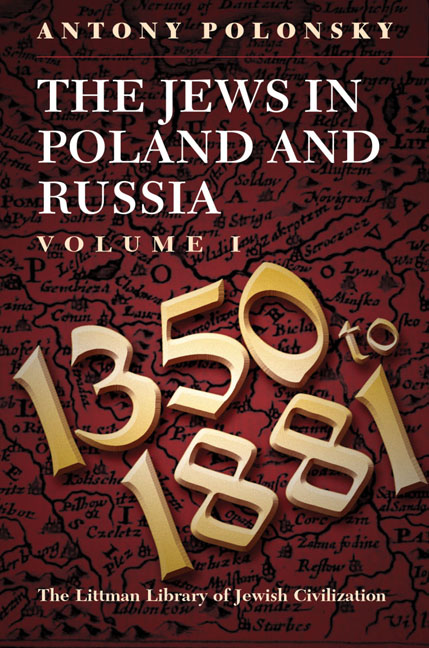Book contents
- Frontmatter
- Dedication
- Acknowledgements
- Contents
- List of Maps
- List of Tables
- Note on Transliteration
- Note on Place Names
- Maps
- General Introduction
- PART I JEWISH LIFE IN POLAND–LITHUANIA TO 1750
- PART II ATTEMPTS TO TRANSFORM AND INTEGRATE THE JEWS, AND THE JEWISH RESPONSE, 1750–1880
- Glossary
- Bibliography
- Index
10 - The Jews in the Tsarist Empire, 1772–1825
- Frontmatter
- Dedication
- Acknowledgements
- Contents
- List of Maps
- List of Tables
- Note on Transliteration
- Note on Place Names
- Maps
- General Introduction
- PART I JEWISH LIFE IN POLAND–LITHUANIA TO 1750
- PART II ATTEMPTS TO TRANSFORM AND INTEGRATE THE JEWS, AND THE JEWISH RESPONSE, 1750–1880
- Glossary
- Bibliography
- Index
Summary
Transformations brought about by governmental force will generally not be stable and will be especially unreliable in those cases where this force struggles against centuries-old habits, with ingrained errors and with unyielding superstition; it would be better and more opportune to direct the Jews towards improvement; to open the path to their own benefit, overseeing their progress from afar and removing anything that might lead them astray, not employing any force, not setting up any particular institution, not acting in their place, but enabling their own activity. As few restrictions as possible, as much freedom as possible. This is a simple formula for any organization of society.
MIKHAIL MIKHAILOVICH SPERANSKY, Minutes of the Committee for the Amelioration of the Jews, 20 September 1803In the conception of the Great Russian people, the tsar is the embodiment of the state … He is not the chief of the army, nor the people's choice, nor the head of state or the representative of the administration, nor even the sentimental Landesvater or bon père du peuple … The tsar is the state itself—ideal, benevolent, and at the same time its stern expression.
KONSTANTIN DMITRIEVICH KAVELIN, Thoughts and Remarks about Russian History, 1866SPECIFIC FEATURES OF THE INTEGRATIVE PROCESS IN THE TSARIST EMPIRE
AS A RESULT of the partitions of Poland the tsarist empire came to control the destinies of a large majority of the Jews of the Polish–Lithuanian Commonwealth. Under the terms of the first partition (1772), Russia annexed an area of Belarus, including Polotsk, Mogilev, and Vitebsk, with a Jewish population of over 50,000. The second and third partitions (1793, 1795) brought the boundaries of the empire up to the rivers Bug and Niemen and incorporated almost the entire Grand Duchy of Lithuania, including major Jewish centres such as Minsk, Vilna, Grodno (today Hrodna), and Novogrudok, and much of right-bank Ukraine including Zhitomir, Bratslav, and Kamenets-Podolsky (Kamyanets- Podilsky). This brought under the sway of the Romanovs a Jewish population which was estimated by the Polish census of 1764 at nearly 290,000. By the end of the eighteenth century this figure had grown to around 600,000, approximately 1.5 per cent of the empire's inhabitants.
- Type
- Chapter
- Information
- The Jews in Poland and RussiaVolume I: 1350 to 1881, pp. 322 - 354Publisher: Liverpool University PressPrint publication year: 2009

